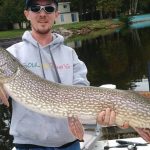A coalition of more than 100 winter sports athletes, outdoor recreation businesses and brands, and tourism leaders on Thursday urged the Environmental Protection Agency (EPA) to protect national parks in Utah and across the West from haze-causing coal pollution.
Citing the enormous role that Utah’s national parks play in the state’s $12 billion outdoor recreation economy, the coalition called on EPA Region 8 Administrator Shaun McGrath to require Rocky Mountain Power’s Hunter and Huntington coal-fired power plants to reduce dangerous coal pollution by installing modern, cost effective and achievable controls, as states like Arizona, Colorado, and New Mexico have all required of local power plants. A copy of the letter can be found here.
The EPA faces a Nov. 19 deadline to decide on the State of Utah’s proposal to address haze-causing emissions from local power plants, which failed to require Rocky Mountain Power’s Hunter and Huntington coal-fired power plants to reduce emissions by installing pollution controls.
“With many world renowned outdoor sports brands and destinations based in Utah, it’s shocking that it is last state to require coal fired power plants to reduce harmful haze causing emissions,” said Chris Steinkamp, Executive Director of Protect Our Winters.“For the national parks we love, the well-being of Utahns and our livelihoods, it is time that the Environmental Protection Agency grant the same fair and equal protection from coal pollution as they’ve done in other states.”
“For a state that prides itself on its natural treasures, it’s an abomination that Utah won’t clean up its act when it comes to coal,” said Philip Drake, Marketing Director at DPS Skis. “The current effects from coal pollution are a threat to Utah’s environment and wild lands, neighboring states, and the children, adults, and elderly who make our state home. We need the EPA to stand up for clean air and our way of life by protecting Utah from dangerous coal pollution.”
Utah is celebrated for its iconic national parks stunning visual scenery, and world-class recreational areas.
Arches, Canyonlands, Capitol Reef, Bryce, and Zion national parks are an economic engine for the state’s economy and local recreation businesses that rely on the protection of these wild places. In 2014, more than 10 million visitors from around the world visited Utah’s national parks and added $730 million dollars to Utah’s economy. The tourism industry supports about 132,000 jobs, or about one out of every ten jobs in the state.
“I’m a Utahn, born and bred, and I know first-hand that we have a problem we need to fix,” said Angel Collinson, a professional skier and native of Little Cottonwood Canyon. “The air pollution here is bad for Utah’s outdoor industry, and
winter-sports tourism specifically, but it’s also bad for the health of
anyone trying to make a life here: families, road-crew workers,
businesspeople, and everyone breathing our state’s airMy upbringing allowed me to glimpse a life that all of Utah’s visitors and residents deserve: clean air, long views, and a healthy outdoor lifestyle. It’s time for our state and the US Environmental Protection Agency to clean up coal pollution and protect our parks, our air, and our communities.”
Under the Clean Air Act’s “Regional Haze Rule”, federal and state agencies are required to work together to improve visibility at all “Class 1” national parks and wilderness areas, including Utah’s National Parks. Utah is the last state in the country to require power plants to reduce haze-forming emissions that pollute skies and shroud the views at national parks.









